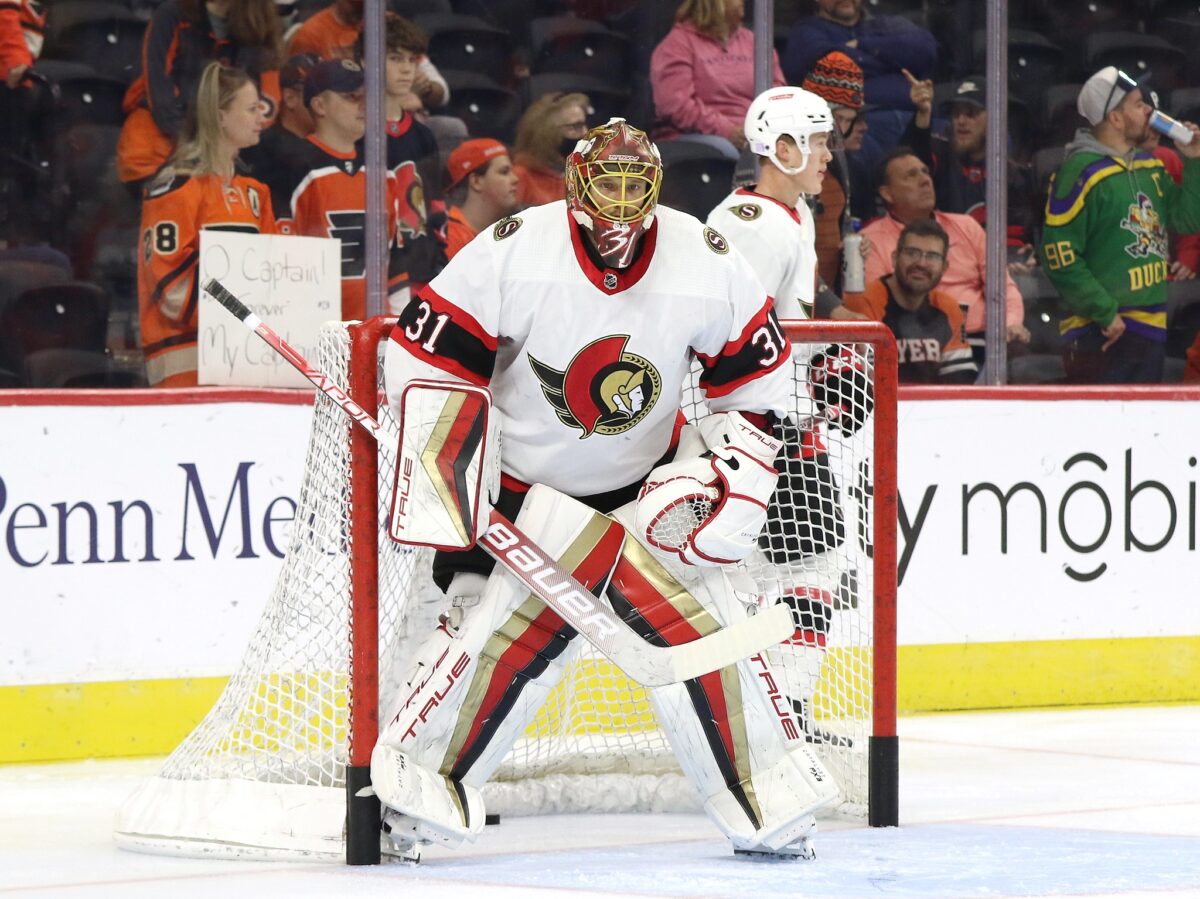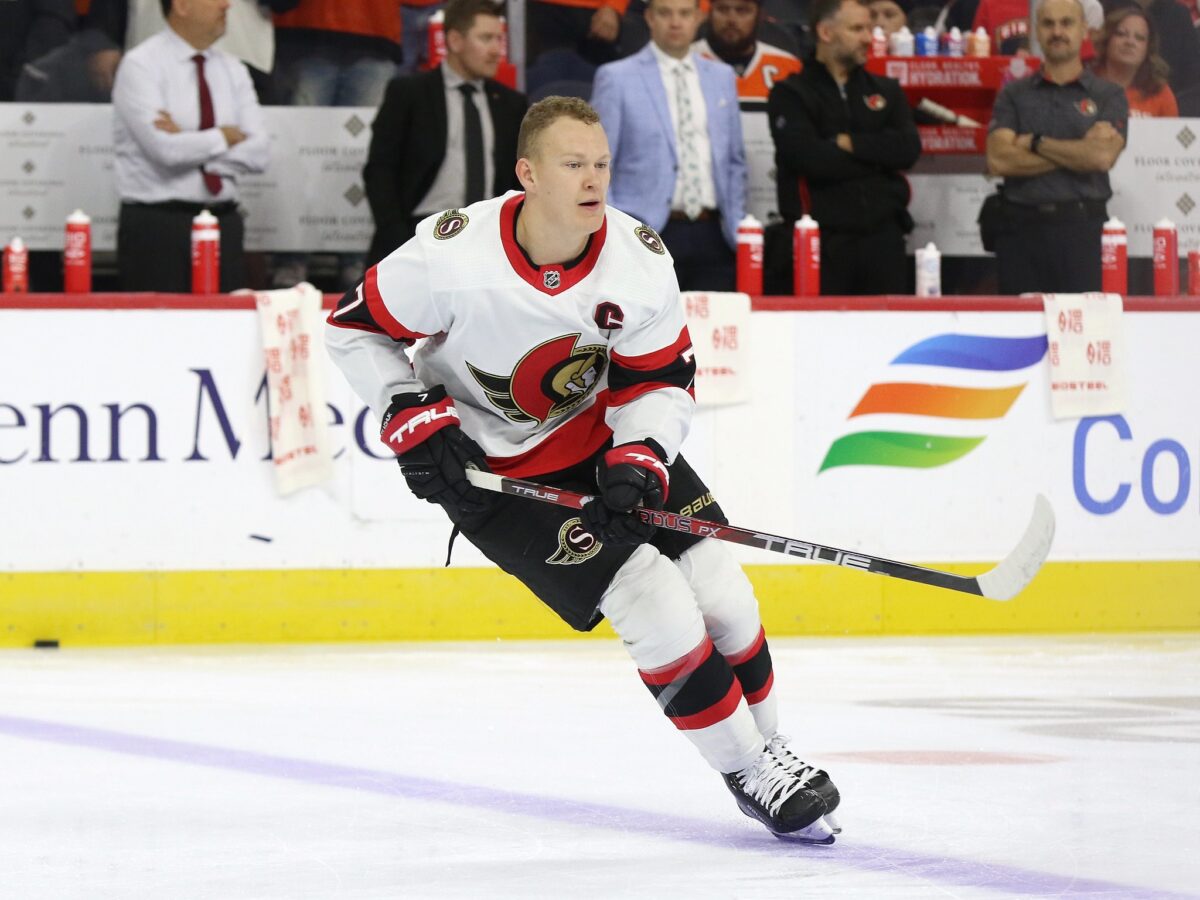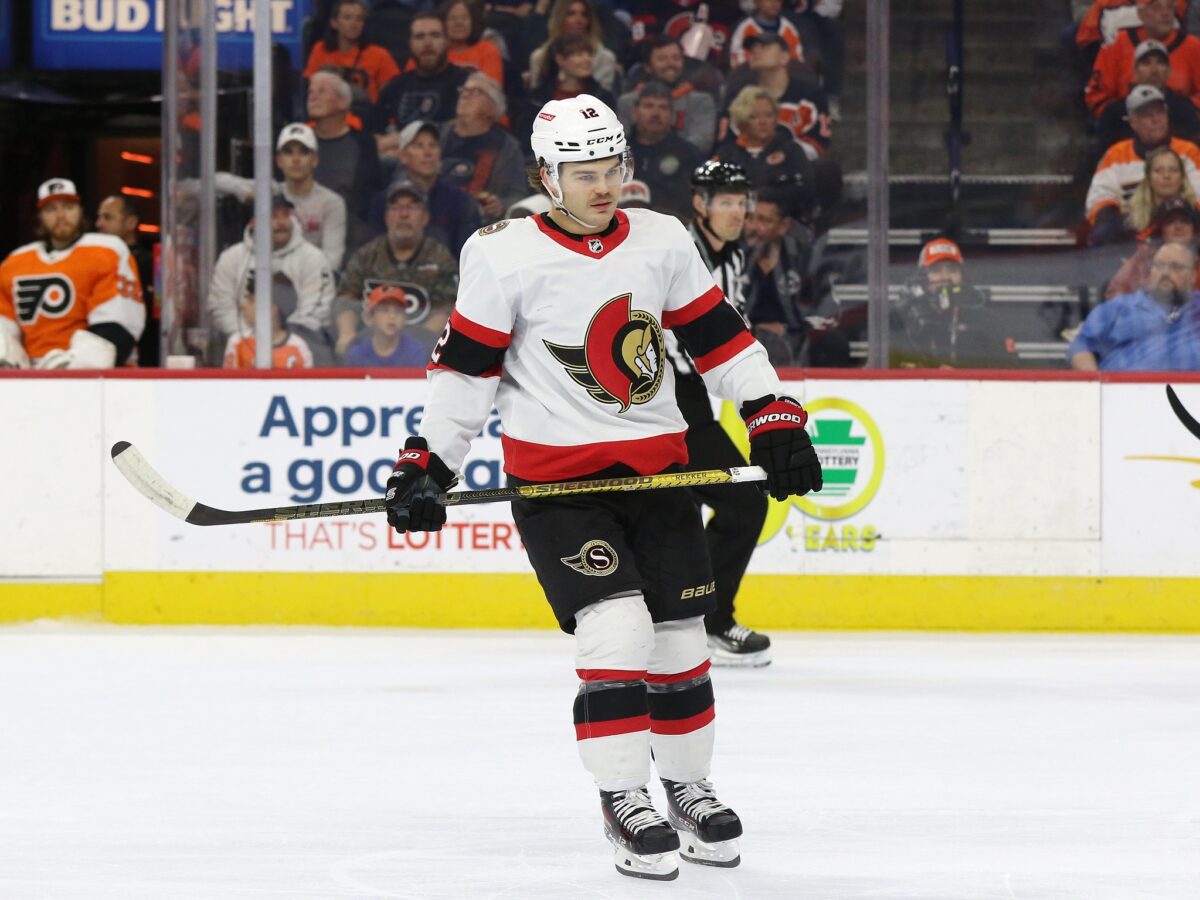The Ottawa Senators should have been a playoff team this season. The team did nearly everything right, acquiring a top goalscoring forward at the 2022 Draft, signing a well-respected leader who proved he still had plenty of gas in the tank, and allowing their top young stars to take on the responsibility of guiding this team. Yet it wasn’t enough. Following a 7-2 loss to the Florida Panthers on April 6, the Senators missed the postseason for the sixth consecutive season, and many have been left wondering, “Why?”
It certainly wasn’t scoring. Tim Stutzle finished with 90 points, the highest total since Daniel Alfredsson put up 89 in 2007-08. Likewise, his 39 goals tied Dany Heatley’s total from 2008-09, which placed him ninth all-time among Senators forwards. Looking further down the lineup, it’s also the first time in 15 years that the Senators have had three 30-plus goal scorers, with Brady Tkachuk and Claude Giroux surpassing the mark. It also wasn’t the defence, who were able to decrease the number of shots against per 60 minutes from 32.04 to 30.22, lower than both the Colorado Avalanche and Tampa Bay Lightning. So, then, what was the problem?
Three things jump out as major issues holding the Senators back: goaltending, winning on the road, and quality shots. If Ottawa can figure out those areas, there’s little chance they miss the playoffs for a seventh season in 2023-24.
1. Inconsistent Goaltending
In 2021-22, the Senators allowed 266 goals, the 11th-highest total in the NHL, and were seventh in shots against per 60 minutes. Thankfully, Anton Forsberg was able to keep Ottawa in many games that they shouldn’t have been in, finishing the season with a .917 save percentage (SV%) across 46 starts. The waiver pickup was one of the biggest surprises that year, taking over for the consistently inconsistent Matt Murray, who finished the season with 20 starts and a .906 SV% and was expected to emerge as the Senators’ starter in 2022-23.

Unfortunately, an injury forced Forsberg out for the rest of the season in February, leaving the crease to the reliable veteran Cam Talbot. It was the exact job that he was brought in to do – support Forsberg and stabilize the team’s shaky goaltending situation. Yet that’s the exact opposite of what happened. Despite facing fewer shots on average and seeing the team maintain possession of the puck for the majority of each game, Ottawa allowed 271 goals, an increase of five goals from 2021-22, and Talbot finished with a .898 SV% over 36 games.
Related: Ottawa Senators’ 2022-23 Player Grades
Part of the problem can be linked to a league-wide increase in scoring, but not all of it. Talbot was especially shaky in Ottawa, forcing the team to rely heavily on rookie goaltender Mads Sogaard. While there were some games where he looked like a future NHL starter, he also frequently looked like a 22-year-old who still hadn’t worked out all the kinks. Add in the fact that the Senators used four other goalies this season and you have one chaotic crease that needs to find some consistency before they can make a playoff push.
2. Inability to Win on the Road
The Senators increased their win total this season from 33 in 2021-22 to 39 and finished with 13 more points in the standings. Part of that was thanks to their incredible home record. With 24 wins and 14 losses, they had the 12th-best record while playing in front of their fans. It’s a huge increase from their 2021-22 record of 15 wins and 22 losses at home.

But when the Senators were away from Canadian Tire Centre, they were one of the worst teams in the NHL. In their 41 games on the road, they won just 15 of them and dropped five more in overtime or shootouts. Just seven teams had worse road records than Ottawa, all of which will be competing for the first-overall pick in the Draft Lottery, whereas just the Lightning and New York Islanders finished their seasons with a losing record on the road and still qualified for the playoffs.
3. Quality Shots
As mentioned previously, the Senators took a big step forward in their goal-scoring. Stutzle, Tkachuk, and Giroux led the charge, but Shane Pinto, Drake Batherson, and Alex DeBrincat also made their mark, combining for 69 goals, with DeBrincat finishing in the league’s top-100 scorers. While it’s not record-setting, it was a big improvement from last season, as was their shot total, which sat seventh in the NHL.
However, when looking at the team as a whole, the Senators are significantly behind the best in the league in terms of shot quality. Although their shot total was incredibly high, their shooting percentage sat way down at 24th overall at 9.4%. Additionally, the team finished the season with an expected 168.9 goals-for but finished with just 149 goals at 5-on-5 despite being a strong possession team. That means Ottawa just wasn’t getting enough quality shots against their opponents.

Take Batherson, who finished the season with 22 goals, putting him fifth on the team in scoring. He finished the season with 249 shots, which gave him just an 8.8 shooting percentage. Looking through the teams currently in the playoffs, only Joel Eriksson-Ek and Vincent Trochek had a similar stat line of 20-plus goals and a sub-10 shooting percentage. Tkachuk finished with 347 shots, the fourth-highest total in the NHL, but had just 35 goals. Of the 10 players who fired the puck more than 300 times, he’s the only one under 40 goals.
While skilled scorers suffer from bad bounces and dips in shooting percentages all the time, the issue persists throughout the Senators’ lineup, which shouldn’t be the case in a season in which scoring is up and goalie save percentages are down. The top scorers aren’t scoring as much as they should and the depth forwards aren’t shooting enough, forcing the top lines to carry all the offensive weight. Unless that changes, Ottawa will continue to struggle to get into the Eastern Conference’s top half.
Overall, the 2022-23 season was a positive one, with several players taking meaningful steps forward in their development and showing growth as a whole. But these three issues need to be addressed before the Senators can emerge as a strong playoff contender.